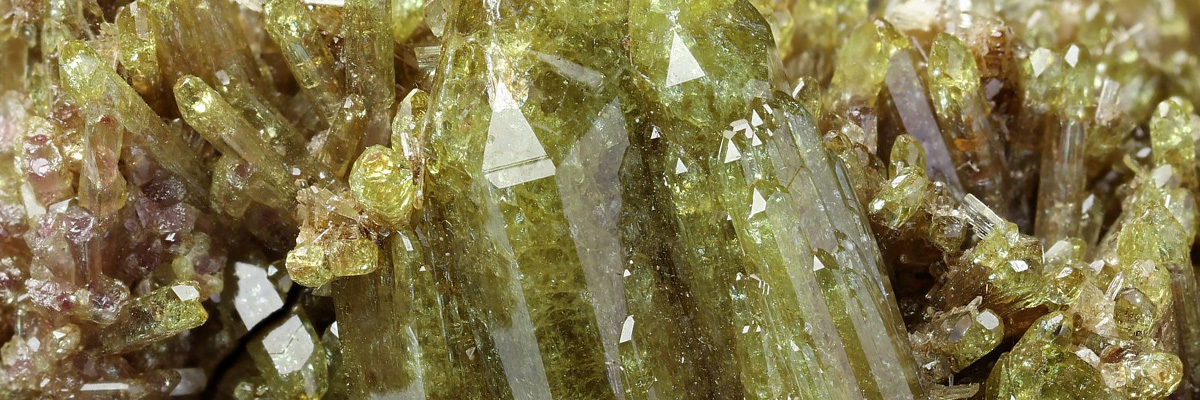Vesuvianite, also known as idocrase, is a complex calcium aluminum magnesium silicate mineral belonging to the sorosilicate class. It exhibits a range of colors, including green, yellow, brown, and even blue or purple, with a vitreous to resinous luster. The mineral commonly forms well-developed prismatic or massive crystal structures, and occasionally exhibits dipyramidal or columnar habits. Vesuvianite is typically associated with metamorphic rocks, particularly those formed from limestone and dolomite during contact metamorphism.
Usage
Vesuvianite has limited industrial uses due to its relatively low abundance and complex composition. However, it is an important mineral for geologists and mineralogists studying the metamorphic processes that affect carbonate rocks. Vesuvianite’s presence in these rocks can provide valuable insights into the temperature, pressure, and chemical conditions during their formation and alteration.
Gemstone
Vesuvianite is considered a rare and attractive gemstone, prized for its vivid colors and high luster. It is sometimes referred to as “California jade” or “American jade” due to its resemblance to the more famous jade gemstone. Its durability and unique crystal structures make it a popular choice for collectors and jewelry enthusiasts seeking distinctive and colorful gems. Vesuvianite is most commonly used in earrings, pendants, and brooches, where its vibrant hues can be showcased to great effect.
Origin
Vesuvianite is formed through metamorphic processes that affect carbonate rocks, particularly limestone and dolomite. These rocks are altered by heat and pressure during contact metamorphism, when they are in close proximity to intrusions of magma. Under these conditions, the constituent elements of the original rocks rearrange to form new minerals, including vesuvianite.
Occurrence
Vesuvianite is found in metamorphic rocks, particularly those formed during contact metamorphism of carbonate rocks like limestone and dolomite. It was first discovered on Mount Vesuvius in Italy, hence its name. Other notable occurrences include California and Vermont in the United States, Canada, Russia, Switzerland, and Tanzania. These locations are known for their unique geological settings, which create the necessary conditions for the formation of vesuvianite.
Metaphysical
In metaphysical and spiritual practices, vesuvianite is believed to possess a range of beneficial properties. The mineral is said to promote personal growth, self-discovery, and the release of negative emotions. It is also thought to enhance creativity and inspire the pursuit of one’s passions. Vesuvianite is believed to strengthen the connection between the heart and the will, allowing individuals to act in alignment with their true desires and intentions.
| Class | Sorosilicates |
| Formula | Ca₁₀(Mg, Fe)₂Al₄(SiO₄)₅(Si₂O₇)₂(OH,F)₄ |
| Luster | Vitreous to resinous |
| Hardness (Mohs) | 6.5 |
| Streak | White |
| Color | Green, yellow, brown, blue, purple |
| Cleavage | Poor in one direction |
| Specific Gravity | 3.3 – 3.5 |


